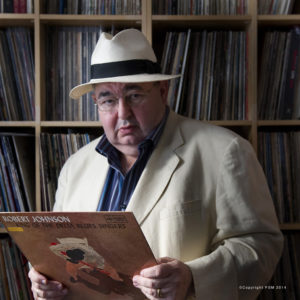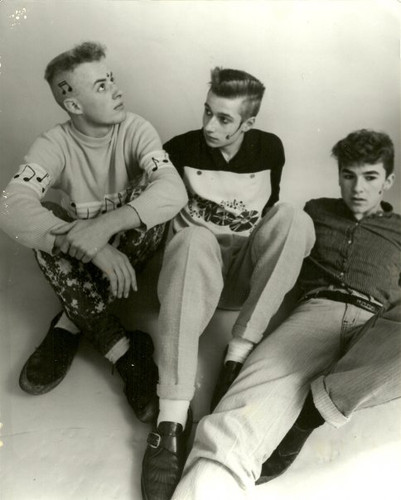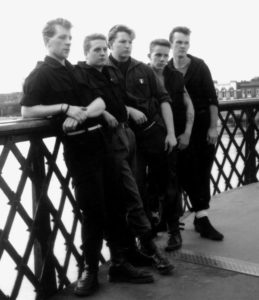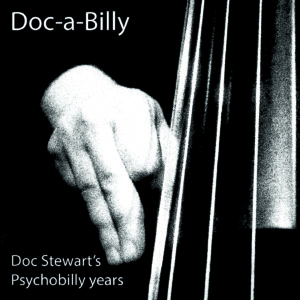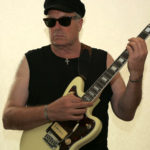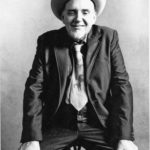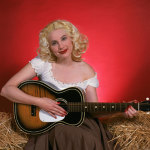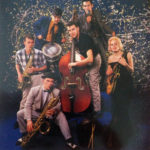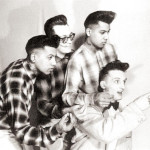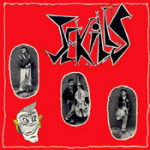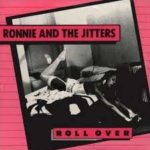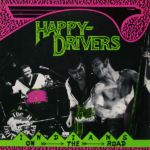Paul “Doc” Stewart is an unsung hero of the Psychobilly / Rockabilly scene. Unless you’re a maniac like me who likes to read the covers from top to bottom (and even read the dead wax just in case…), you may not be familiar with his name. But Paul “Doc” Stewart recorded, engineered, and produced some of the best and the most innovative bands of the genre, including the Quakes, the Rapids, the Rattlers, Outer Limits, the Pharaohs, Frenzy, Torment…
Impressive, isn’t it? Well, here at the Rockabilly Chronicle, we thought that the man deserved an interview. So here it is, and thank you, Mr Stewart, for your work!
First, I’d like to know how you became interested in Rockabilly and Psychobilly?
Well I come from a family that has produced many musicians and performers over several hundred years, so it’s in the blood, and I was of course born in the mid 1950s, so l started to become aware of music then and in the pre Beatles 60s.
My mother was always on a mission to make sure my brothers and I were aware of the two most important things in life… which were Blues and Jazz. De who was eldest brother, was eight years my senior and he played a lot of rock and roll. When I say played I do mean played, he had a guitar and I can remember him with his ear pressed to the speaker of our old black and white TV, calling out the words of songs to my mum, who would write them down in shorthand, then type them up so he could learn them. So I grew up with a lot of rock and roll in the house.
What led you to produce albums?
I was always into the technology of making music, I got my first tape recorder in 1968 and started making recordings then. In 1973 I made my first professional recording of a band called “A Phantasy Circus”, which led to them getting a showcase with WEA Records and I just carried on doing things in music from then.
How did you get in touch with Roy Williams, with whom you worked extensively?
I worked at London’s most famous rock venue, the Rainbow Theatre, where I designed, installed and ran the recording studio and rehearsal facilities but after about 18 months I had the opportunity to go to the USA, so went there and worked with a number of bands while developing a business with my brother, who by this time was a DJ on a station in Charleston SC.
When I came back to the U.K., I was working both in photography and live sound with all manner of bands, including King Kurt at the University of North London. I then got a call from a studio in Harrow in the north of London. They told me that the owner Ozzie Burns, who was the original producer of the BeeGees was sadly very ill with cancer and they wanted me to run the studio for him. I had only been there about three weeks when a Teddy boy walked in to the place, with a BMX bike, about two sizes too small for him. This was of course Rockin’ Roy Williams. He lived nearby and had seen the studio and as it was near enough for him to borrow his kid’s bike to get there, he decided to check the place out.
We spoke about rocking music, Rockabilly, Psychobilly and the fusion with Punk. He booked some time and the next week Frenzy arrived. I was initially booked as the engineer, but as is my way started making suggestions and shaping the sound, so I became co-producer by default, and the band acknowledged this by giving me a production credit on the album.
You often shared a co-producer credit with Williams. How did you work together?
I’m not really sure there was ever a conscious co-production strategy, normally we had both heard the bands before we went into the studio, I always tried to see them live if possible too. Then we would start to run through the tracks and get a feel for the sound. Roy left things like mic selection and miking up to me, and that’s the first point you can start influencing the final overall sound. Then we would both suggest things to the bands and hopefully they would take it on board.
We did have a few differences of opinion on some tracks, pretty early on I wanted to change the way the bass drum sounded in the recordings, making it sharper and more modern. Roy sometimes wanted a more old fashioned deeper sound. In most cases I think we went with what suited the rest of the recording and the modern sound stayed. On the Pharaohs album Blue Egypt you hear on the track “Tomb of the Dead” the “Panic at the Desk” mix, which frankly I hated, it was Roy’s baby even though in the absence of a digital delay, I had to do by copying, cutting a splicing the tape. The straight mix which came out on Zorch Factor One was a far better result in my opinion, but Roy was paying the bills, so the better mix got relegated to the compilation.
Many young bands recorded their debut album with you. Is that something you had to consider when working with them? Was a part of your job devoted to familiarising them with the studio?
Many bands and performers I’ve worked with have been “Studio Virgins” and you need to show them the ropes, but in the main the Psychobilly bands I worked with were professional and understood that my job was to get the best possible performance and result for them. A few who did have studio experience were surprised that I didn’t want to record everything as completely separate parts, but really wanted, at least on the first take, to get an organic sound where everybody sparks off one another. After that, you can over dub and polish the performance, if you need to.
You’ve worked with bands with drastically different sounds, from the Jazzabilly of Get Smart to the heavy Psychobilly of Skitzo or the Quakes. How did you approach each project?
I always listen to the band and try to find that special something that they have to offer. In advertising it’s referred to as the USP or unique selling potential, a good band will have a “Unique Performing Potential”, something that sets them apart from the run of the mill. I look for that and try and enhance it
How did you work with the bands in the studio? Did you suggest covers, changes in the songs’ structures or different arrangements? Can you give some examples?
Quite often the arrangements of a song can be not quite right for recording and need a bit of a tweak to get them right. As an example “The Outer Limits” EP “The Edge of Time”, needed a bit of depth, because as a three piece with bass guitar, the sound was a bit light. I was working with Steve Rispin as my engineer at the time, and we programmed some really fat organ sounds on my Yamaha DX7/CX5 synth.
We also used that for the spacey keyboard sound on The Pharaoh’s track “Tomb of The Dead”. On that track and “Turkey Dance” from the same album, I had an old friend of mine, Mike Abramov, (who is sadly no longer with us), put down some violin. Mike was a Blues and Klezmer man, so Psychobilly was not his thing at all, but he liked the guys in the band, and they liked him so it worked well.
With The Rattlers’ “Take a Ride” sessions, that also led to the mini album “Rock” the band were short a couple of songs and having watched a Bond movie the night before, I suggested they do the James Bond theme. I wrote it down on the track List as “Jimmy Bond goes Psycho (007)” the record company, with a complete lack of imagination, called it “007 theme” on the sleeve. On a technical note, I’ve been asked about the space sound of the bass slap on that track. I had the loan of a great piece of kit from France, called an Infernal Machine from a company called Publison. I just dialled the sound on that ‘til it sounded right. Tin Pan Alley, was adjacent to Soho, which is London’s red light district. While out for lunch the guys saw an adult shop, which was selling shall we call them inflatable companions. They came into the studio and with all of us suggesting lines, they wrote “Blow up Baby”. Later we went back in the studio and I knew a woman who was a former interpreter and by then the international secretary of a trades union. She was quite straight laced, but when I asked her she came down to the studio, translated the words of “Blow up Baby” into the various European languages and coached Mark Carrington of the correct pronunciation. That’s how the Euro-Mix on “Rock” came about.
You produced some of the most “experimental” bands on the scene, like Torment, Frenzy, the Rapids, and the Pharaohs. Those bands weren’t narrow-minded and were not afraid to include modern elements. Was it something you were looking for?
Frenzy were highly experimental and I really liked working with them and Torment another band from the same part of the world, where by the way I now live. Torment’s Simon Brand was very open to discuss the structure of the tracks and how we were going to do them. “The Mystery Men” EP we did was a great project, with the title track and “Rock Strong” being really special, but all the tracks on that are good. It’s a shame we didn’t do a full album. I did one track for a compilation with the Rapids at Village Way and really liked them. By the time we got round to the album “Turning Point”, I was at Tin Pan Alley and was more or less running the place and was also the main client, this meant that I had more time to spend on the projects. This meant I could work with the bands to develop the sounds. A lot of good tracks came out of that studio at that time. The albums by The Pharaohs and The Rapids had really good production values I think, and were out of mainstream Psychobilly. Roy once said to me that he thought that “Turning Point” sounded like it didn’t belong on his label, it should be on a major.
I’ve read in an interview that Coffin Nails weren’t that happy with the sound of their debut album and said that you and Roy Williams tried to make them sound like Demented Are Go.
Really! I’d not heard they thought that, about Demented are Go I mean, I knew they weren’t happy with the album, which I’m told is still their biggest seller and of course established them as a band. Nothing could be further from the truth as neither Roy or me tried to make them like any other band. As I said, my approach is to find what makes the performer special and enhance that. We brought out what made them special and that was Dave Ward the singer, after he left them, in my opinion, they were pretty mediocre, but tracks like “Werewolf Bitch” and “Myra Hindley” are belting Psycho tracks. I think the truth may be that they had a set idea of what they wanted to sound like and were unhappy giving any kind of creative control to the producer. However as I said I’m told that the fans liked and bought it. And it’s still being streamed today.
Are there unreleased sessions that you worked on?
Yes there are perhaps one or two tracks that I did just with Paul Roman of the Quakes I think I’ve not seen on anything. I also laid down some tracks with The Ant Hill Mob, who were a Neo-Rockabilly band and I think at that time the only one in the UK with a female singer. Lost Moment Records asked Roy and I to produce them and I think they weren’t happy with the way it was going. I went to Village Way Studios for some thing else, only to find them in the control room with another producer, mixing my tape. I was told that when Roy replaced the guitar solo with whistling, they didn’t like it, which to be fair to Roy, was the wrong decision on their part as it really raised the track. I still have a copy master of the tracks from that session, so they may see the light of day at some point.
You not only produced the Quakes’ debut album, but I believe that you also shot the picture for the sleeve that is famous for its Stray Cats reference.
I alway had a parallel career in photography and decided to do a photo shoot with the Quakes. Paul Roman had the idea to pastiche the Stray Cats cover, and I found the location, the basement of a Safeways car park, which was pretty dank. My ex knew the manager so I organised it, I also shot the image of the three of them in black and white, which has become an icon. I also shot the cover for Skitzo Mania.
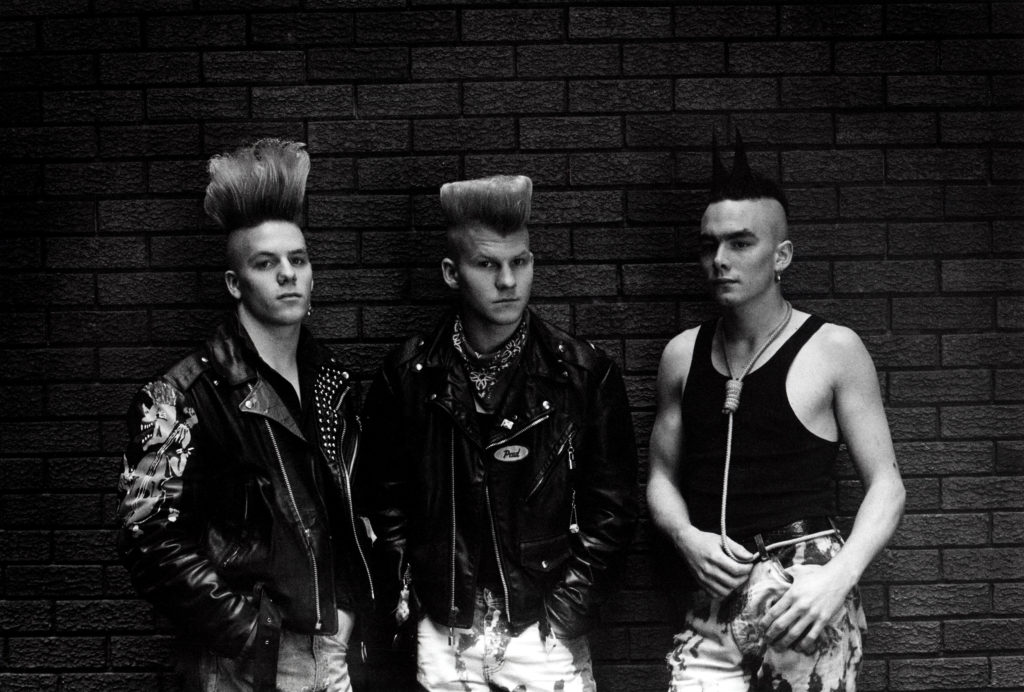
Do you have special memories or anecdotes you’d like to share?
Loads, but we’ll have to change all the names to protect the guilty. I think my favourite experience was at the Klub Foot one night. A kid walked up to me and said, rather aggressively, “You’re Paul “Doc” Stewart and you produced the Rattlers’ “Take a Ride”. I admitted that yes it was me, at which point he grabbed my hand and shook it say “I’ve worn out three copies of that mate, its my favourite record ever”’
Is there a band you would have liked to work with?
Lee Gotcher from the Rapids renamed himself J. C. Lee, and did an interesting album in Japan, I would liked to have worked with him again as a solo project.
Also, I would like to have worked with the BlueCats/ Beltane Fire. Also I did a couple of tracks with the Sidewinders, I thought that they had really great potential and would love to have done an album with them.
They’re all different, but is there an album that you’re particularly proud of?
Where do you start, I enjoyed making them all so it’s a bit like asking which of your kids is your favourite. There’s not one I’m not proud of and believe me there is some mainstream stuff I engineered that I’m embarrassed by, the rockin’ stuff I love it all.
Why did you stop producing bands?
I stopped having it as the main stream of my activity as I hated the way the music scene was going, with far too many bands just producing sampled computerised garbage, rather than learn their craft and play music. But I’ve never really stopped, having done a few mixes for bands over the years. In fact if there are any good psycho bands out there who want to send me a demo, I could be tempted into the studio once again.
Can you tell us more about that Doc-A-Billy project?
I’ve talked to a few of the labels I’ve worked for and I have a list of my favourite tracks from over the years. I’ve been putting together some of them for a limited edition vinyl and CD release (Doc-A-Billy – Paul “Doc” Stewart’s Psychobilly Years) and I plan to film some interviews with the bands in question. I’m developing an online documentary channel at the moment and this would be ideal for that.
(so keep your eyes open and check this site. We’ll give you more info as soon as the album hits the shelves).
This interview © Fred “Virgil” Turgis & the Rockabilly Chronicle / Paul “Doc” Stewart.
Paul “Doc” Stewart on discogs.
Paul “Doc” Stewart is a famous photographer with many exhibitions and books under his belt: http://www.paulstewartphoto.co.uk/
